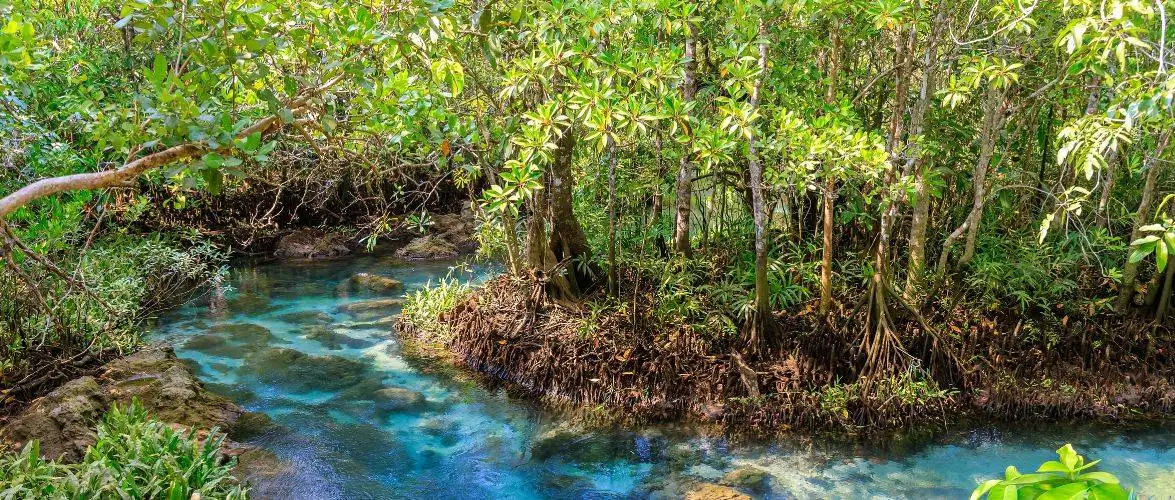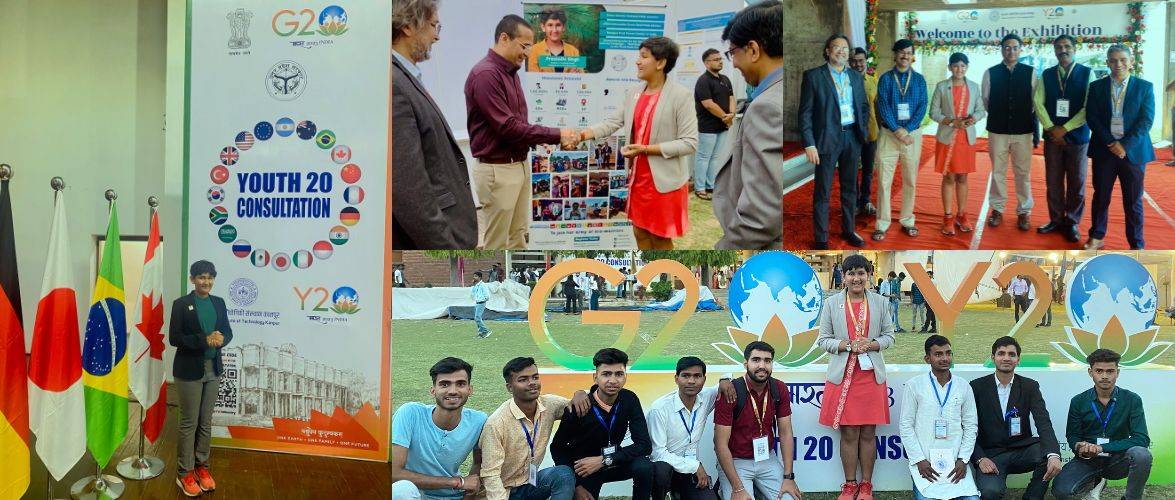Restoring Mangroves: Overcoming Challenges and Strategies for Successful Mangrove Restoration
An Overview:
- A UN report concluded a decrease of 0.3% per year from 1990 to 2020 in mangrove plantations globally.
- In India, the mangrove forest cover has decreased by 210 sq km from 2017 to 2019.
- Mangrove restoration strategies primarily consider – site selection, species selection, planting techniques, and maintenance.
- Factors such as rapid development, pollution, and climate change exacerbate the rate of damage to mangrove restoration.
- The Tamil Nadu government has launched an initiative targeting planting 10 million mangrove saplings over five years.
- ‘MISHTI’ by the GOI aims to promote the development of 540 sq. km of mangroves across 11 states and 2 union territories.
Introduction and Challenges of mangrove restoration:
Mangroves are a remarkable ecosystem that plays a critical role in maintaining the health of our planet. Because of their salt-tolerant properties, they help protect coastal areas from erosion and storm surges, provide vital habitat for numerous species of wildlife, and even contribute to carbon sequestration and medicinal research. However, there is a growing concern over the declining global mangrove forest cover.
The Food and Agriculture Organization of the United Nations reports a decrease of 0.3% per year from 1990 to 2020, with factors such as overexploitation of resources, illegal logging, and human interference in ecologically sensitive areas being responsible for this trend. In India, the situation is similar, with the mangrove forest cover decreasing by 210 sq km in just two years.
Despite the recognition of the importance of mangroves and their dwindling natural cover, there are several challenges associated with their restoration. The restoration process involves finding suitable planting sites that have been altered by human activities, and proper management and maintenance are necessary to ensure the survival of these sensitive ecosystems.
Ongoing care includes controlling erosion, managing invasive species, and maintaining healthy water flow. Successful restoration also requires the engagement and support of local communities, as they are the ones who will ultimately benefit from the health and preservation of mangroves.
Strategies For Mangrove Restoration:
(Source:https://bit.ly/43gYH3H)
Focusing on mangrove restoration is vital for the preservation of these valuable ecosystems. However, successful restoration requires careful consideration of the appropriate strategies. A tailored approach is necessary, which takes into account the specific environmental, social, and economic factors that influence the restoration site selection, species selection, planting techniques, and maintenance. This will ensure the long-term sustainability of restoration efforts. To achieve this goal, here are some strategies for successful mangrove restoration:
Site Selection: The site for mangrove restoration should be carefully selected based on several factors such as the availability of suitable habitat, water quality, soil type, and the presence of existing mangroves. The site should be protected from strong waves and storms, and have a gradual slope to ensure that the roots of the newly planted mangroves can establish themselves.
Species Selection: The selection of mangrove species for restoration should be based on the local environmental conditions, with consideration given to the specific needs of each species. Some species, such as Rhizophora mucronata, are more salt tolerant than others and are therefore better suited to areas with high salinity levels.
Planting Techniques: The planting technique used for mangrove restoration should be appropriate for the species being planted, the site conditions, and the scale of the restoration project. Common techniques include direct planting of seedlings and the use of propagules or stem cuttings. For larger-scale projects, aerial seeding and hydroseeding may be more appropriate.
Maintenance: Regular maintenance is essential for the success of mangrove restoration projects. Maintenance activities may include removing debris and sediment from the site, controlling pests and invasive species, and monitoring the growth and survival rates of the newly planted mangroves. In addition, community engagement and education can help to ensure the long-term success of the restoration project.
Benefits Of Mangrove Restoration And The Importance Of Continued Action:
The loss of mangroves has significant economic and ecological consequences, including decreased fisheries productivity, reduced protection from storms, and increased carbon emissions. Therefore, mangrove restoration is essential for both environmental and economic reasons. Studies have shown that the restoration of degraded mangroves can be beneficial for:
- Enhanced fisheries productivity
- Carbon sequestration
- Biodiversity conservation
- Water quality improvement
- Soil stabilisation
- Ecotourism and recreation
Click to read more about the Benefits of Mangrove Restoration
Continued action is crucial to preserve and restore mangrove ecosystems, as the threats to these ecosystems are ongoing since peripheral factors such as rapid development, pollution, and climate change exacerbate the rate of damage which is still in a healing stage. Therefore, it is imperative that we continue to invest in mangrove restoration and conservation efforts to ensure that these valuable ecosystems continue to thrive for generations to come.
Government Initiatives:
Tamil Nadu Government:
The Tamil Nadu government has launched an initiative to restore and conserve mangroves across the southern wetlands of India, targeting to plant 10 million mangrove saplings over five years in coastal districts with a budget of INR 200 crores. The initiative is crucial to stabilise coastlines, mitigate climate change, and support marine biodiversity.
Due to human activities, mangrove forests have degraded, leading to the loss of valuable ecological services and biodiversity. The initiative’s success will depend on the involvement of local communities, stakeholders, and other key actors in the conservation and restoration of mangrove ecosystems, promoting sustainable development in the coastal regions.
Central Government – MISHTI
To counter depleting mangrove cover within India, the central government has recently launched a new scheme called the Mangrove Initiative for Shoreline Habitats & Tangible Incomes (MISHTI), which aims to promote the development of 540 sq. km of mangroves across 11 states and 2 union territories.
This initiative is part of a larger program called the Amrit Dharohar scheme, which seeks to promote the conservation values of wetlands and their optimal use. The MISHTI scheme will comprehensively explore the possible areas for the development of mangroves, during five years commencing FY 2023-24 onwards; sharing of best practices on plantation techniques, conservation measures, management practices, and resource mobilisation through public-private partnerships are the objectives of the MISHTI scheme
Global Efforts:
Java Island, Indonesia:
In the Demak district of Indonesia located on Java island, combat the erosion and rising sea levels that threaten their coastal areas was severe. This is when clusters of communities in that area turned towards mangrove restoration as a strategy to protect themselves against the impacts of climate change. The restoration involved the creation of wave-calming structures in the shallows along the coast, allowing sediment to accumulate and providing favourable conditions for mangroves to grow naturally. This approach is known as the “Building With Nature” program which is part of a larger initiative led by Wetlands International and supported by the UN on Ecosystem Restoration. Read more
There is indeed hope, that continued efforts to restore and conserve mangroves will lead to the recovery of these valuable ecosystems. As awareness of the importance of mangroves grows, there is potential for increased funding and support for restoration projects. Efforts like that of Prasiddhi Singh, the founder of Prasiddhi Forest Foundation and the Green Pillar have taken up various initiatives in a bid to increase mangrove cover.
Plastic Collection under the Mangrove Plantation Drive led by Prasddhi Singh, Founder of Prasiddhi Forest Foundation & The Green Pillar
As the brand ambassador of Green Tamil Nadu Mission, she conducted Mangrove Plantation at Kovalam Creek, Tamil Nadu in tandem with the District Office, District Forest Office, BDO, Project Development Office, Local Panchayat, District MLA, and local villagers. If you would like to be a part of her Mangrove Plantation drive, you can opt for PLANT A TREE and support this 10-year-old prodigy in her mission to make this planet a better place to live.
Mangrove Plantation at Kovalam Creek, Tamil Nadu







